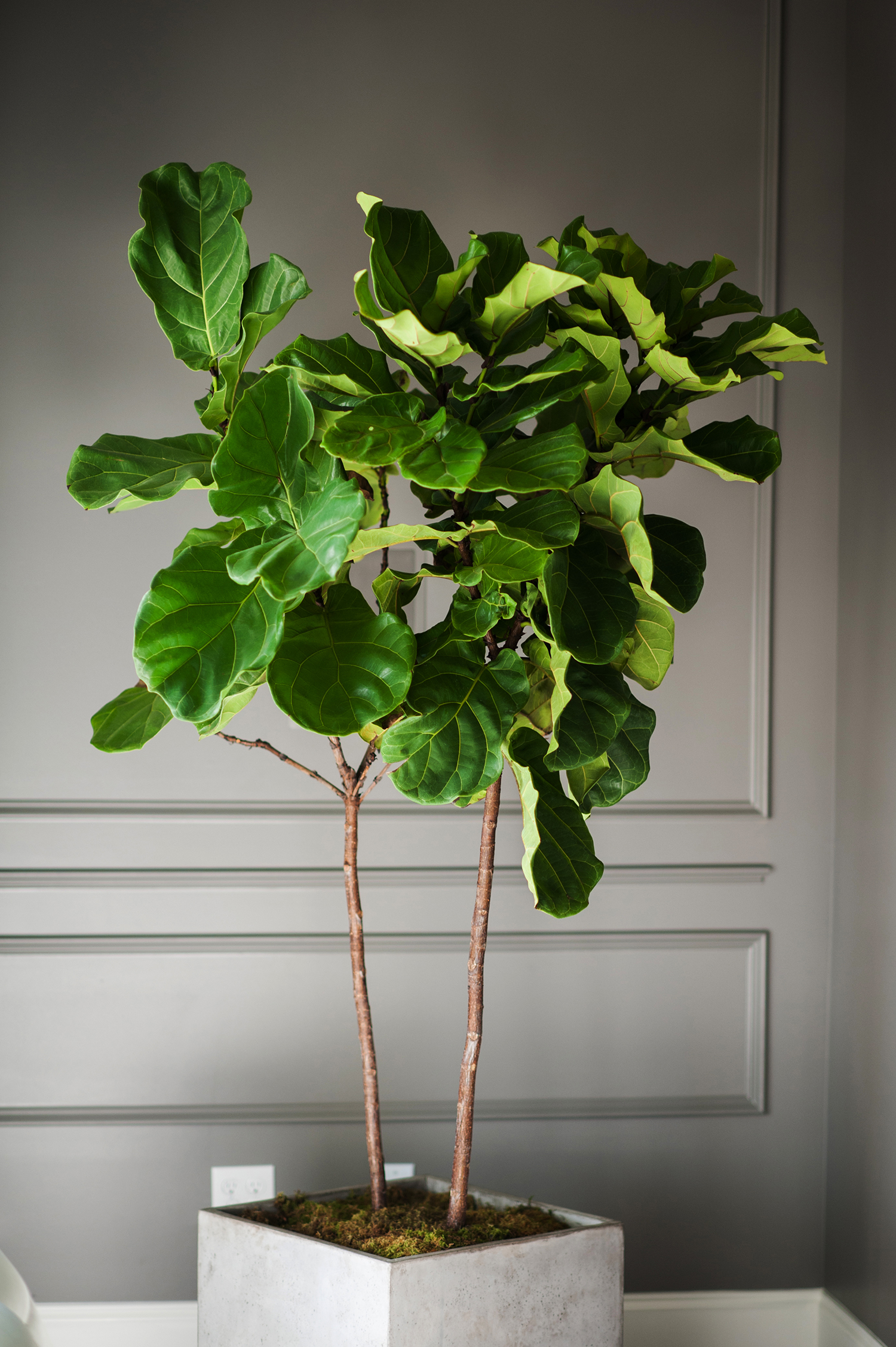How To Grow And Care For A Fiddle Leaf Fig Plant
If you're looking for a stylish and low-maintenance plant that will add a touch of natural greenery to your home, the Fiddle-Leaf Fig plant might be just what you've been searching for. This popular houseplant is known for its large, violin-shaped leaves and its striking presence, making it a favorite among decorators and plant lovers alike. In this guide, we'll share everything you need to know about caring for this stunning plant.
:max_bytes(150000):strip_icc()/grow-fiddle-leaf-fig-indoors-1902756-06-ce2bd72063d34b9d84ed2668817b89ba.jpg)
Plant Attributes
The Fiddle-Leaf Fig plant, also known by its scientific name Ficus lyrata, is native to western and central Africa. This tree-like plant can grow up to 50 feet tall in its natural habitat, although it is typically kept much smaller when grown indoors. The plant features large, leathery leaves that can grow up to 18 inches long and 8 inches wide. The leaves are a deep green color and have a glossy finish that adds to their visual appeal. The plant's trunk is also an attractive feature - it has a rough, bark-like texture that adds a rustic feel to any space.
Plant Care
The Fiddle-Leaf Fig plant is relatively easy to care for, but it does require a bit of attention to keep it thriving. Here are some tips to keep in mind:
- Light: The plant needs bright, indirect light to truly thrive. It can be placed near a window, but avoid direct sunlight. Too much sunlight can cause the leaves to burn.
- Water: The plant likes moist soil, but it's important not to overwater it. Allow the soil to dry out between waterings to prevent root rot.
- Temperature and Humidity: The Fiddle-Leaf Fig plant prefers warm, humid environments. Aim for a temperature range of 60-75 degrees Fahrenheit and keep the plant away from drafts.
- Fertilizer: The plant benefits from regular fertilizing during the growing season (spring and summer). Use a balanced fertilizer and follow the package instructions for application.
Pruning
Pruning your Fiddle-Leaf Fig plant is important for keeping it healthy and attractive. Here are some tips:
- Remove any damaged or yellowing leaves as soon as you notice them. This will prevent the plant from wasting energy trying to repair the damaged leaves.
- Trim any branches that are growing in an undesirable direction. This will help the plant maintain its shape and promote healthy growth.
- Cut back any branches that are getting too long. This will encourage the plant to grow bushier and fuller.
Propagation
If you want to grow new Fiddle-Leaf Fig plants, propagation is an option. Here's how:
- Take a cutting from the plant. Choose a healthy branch with several leaves.
- Remove the lower leaves from the cutting. Leave the top few leaves intact.
- Dip the cut end of the branch in rooting hormone. This will help the plant develop roots.
- Plant the cutting in a pot with well-draining soil. Keep the soil moist and warm, and wait for the plant to develop roots and new growth.
Potting & Repotting
The Fiddle-Leaf Fig plant can grow quite large, so it's important to choose a pot that can accommodate its roots. Here are some tips:
- Choose a pot that is 2-4 inches larger than the current pot. This will give the plant room to grow.
- Make sure the pot has good drainage. This will prevent water from accumulating in the soil and causing root rot.
- Use a well-draining potting mix. This will also prevent water from accumulating in the soil.
Common Pests and Plant Disease
Like all plants, the Fiddle-Leaf Fig plant can be susceptible to pests and diseases. Here are some common ones to watch for:
- Mites: These tiny insects can suck the sap from the leaves, causing them to turn yellow or brown. To get rid of them, clean the leaves with a soapy solution and treat the plant with insecticidal soap.
- Mealybugs: These insects look similar to cotton and can be found on the leaves and stems. They can cause the leaves to distort and turn yellow. To get rid of them, remove them manually and treat the plant with insecticidal soap.
- Root Rot: This disease can occur if the plant is overwatered or planted in soil that doesn't drain well. To prevent root rot, make sure the soil is well-draining and allow it to dry out between waterings.
Common Problems
The Fiddle-Leaf Fig plant can be fairly hardy, but there are a few problems that can occur. Here are some common ones:
- Yellowing leaves: This can be a sign of overwatering or underwatering. Check the soil to see if it's too wet or too dry and adjust your watering accordingly.
- Brown spots on leaves: This is usually caused by too much sunlight. Move the plant to a spot with less direct light.
- Leaves dropping: This can be a sign of overwatering, underwatering, or a change in environment. Check the soil and environment to pinpoint the cause.
Overall, the Fiddle-Leaf Fig plant is a beautiful and easy-to-care-for addition to any home. With a little attention and care, this stunning plant can thrive for many years to come.
:max_bytes(150000):strip_icc()/grow-fiddle-leaf-fig-indoors-1902756-06-ce2bd72063d34b9d84ed2668817b89ba.jpg)


Post a Comment for "How To Grow And Care For A Fiddle Leaf Fig Plant"